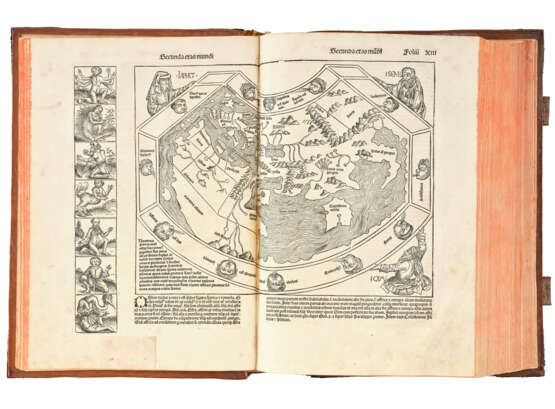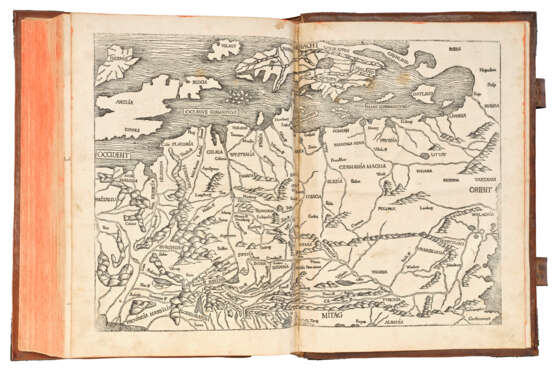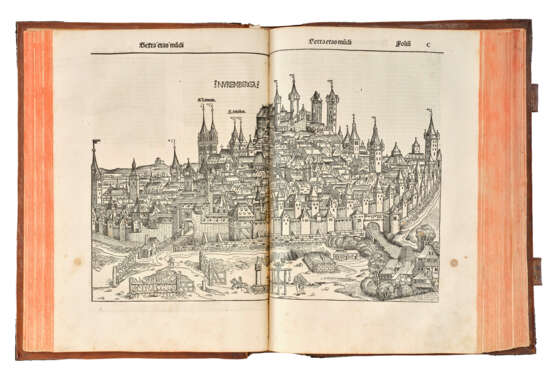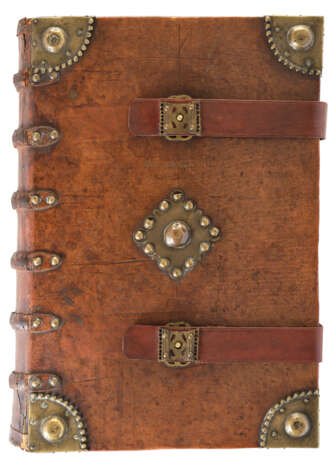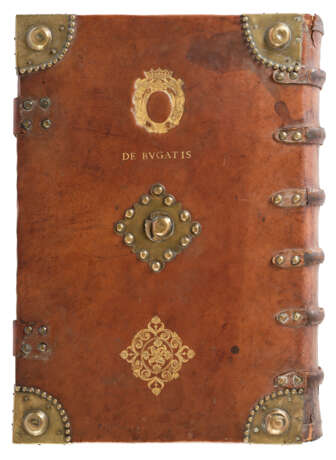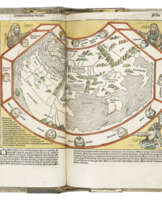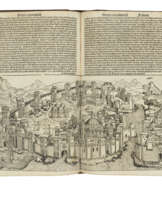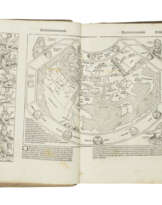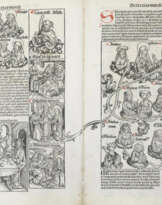ID 993159
Lot 119 | SCHEDEL, Hartmann (1440-1514)
Estimate value
£ 35 000 – 45 000
Liber chronicarum. Nuremberg: Anton Koberger, for Sebald Schreyer and Sebastian Kammermeister, 12 July 1493.
First edition of the Nuremberg Chronicle, the most extensively illustrated book of the 15th century, with over 1800 woodcuts. Albrecht Dürer, the printer Koberger's godson, is thought to have contributed to the celebrated series of woodcuts while working for the workshop of Michael Wolgemut. The publication history of the Nuremberg Chronicle is perhaps the best documented of any book printed in this period: the contracts between Schedel and his partners Schreyer and Kammermaister, and between Schedel and the artists, all survive in the Nuremberg Stadtsbibliothek, as do detailed manuscript exemplars of both the Latin and the German editions. The Nuremberg Chronicle also includes two double-page maps: a world map (Shirley 19) based on Mela's Cosmographia (1482), and a map of northern and central Europe by Hieronymus Münzer (1437-1508) after Nicolas Khyrpffs. The world map is one of only three 15th-century maps showing Portuguese knowledge of the Gulf of Guinea of about 1470. The map of Europe is closely associated with Nicolas of Cusa's Eichstätt map, with which it is thought to share a common manuscript source of c. 1439-54. It is therefore claimed to be the first modern map of this region to appear in print. Although published later than the map of Germany in the 1482 Ulm Ptolemy, it was constructed earlier (Campbell, The Earliest Printed Maps, 1472-1500, 1987). HC *14508; BMC II, 437; CIBN S-161; BSB-Ink. S-195; Bod-inc. S-108; Schreiber 5203; Goff S-307; ISTC is00307000.
Imperial folio (445 x 302mm). 326 leaves. 1809 woodcut illustrations printed from 645 blocks (S.C. Cockerell's count, Some German woodcuts of the fifteenth century, 1897, pp.35-6), by Michael Wolgemut, Wilhelm Pleydenwurff and their workshop, including Albrecht Dürer (some marginal repairs and very occasional worming mostly confined to margins but affecting a few letters on second leaf, minor marginal staining and thumbsoiling, repaired tears into text in b1 and 2g5, small marginal chip in 2g5 with slight loss, minor hole just into printed area of 2g6). 18th-century calf over wooden boards, metal corner- and centerpieces, external spine bands secured with metal bosses, front cover tooled in blind ‘De Bugatis’, rear cover more recently gilt-tooled ‘De Bugatis’ and with armorial and lozenge decoration, foredge clasps (straps renewed, short splits at spine ends). Provenance: some early annotations – Borgazzi family (binding, label inside front cover).
Special notice
No VAT is payable on the hammer price or the buyer's premium for this lot. Please see the VAT Symbols and Explanation section of the Conditions of Sale for further information
| Artist: | Hartmann Schedel (1440 - 1514) |
|---|---|
| Place of origin: | Western Europe, Germany, Europe |
| Auction house category: | Antiquarian books, Printed books |
| Artist: | Hartmann Schedel (1440 - 1514) |
|---|---|
| Place of origin: | Western Europe, Germany, Europe |
| Auction house category: | Antiquarian books, Printed books |
| Address of auction |
CHRISTIE'S 8 King Street, St. James's SW1Y 6QT London United Kingdom | |
|---|---|---|
| Preview |
| |
| Phone | +44 (0)20 7839 9060 | |
| Buyer Premium | see on Website | |
| Conditions of purchase | Conditions of purchase |
